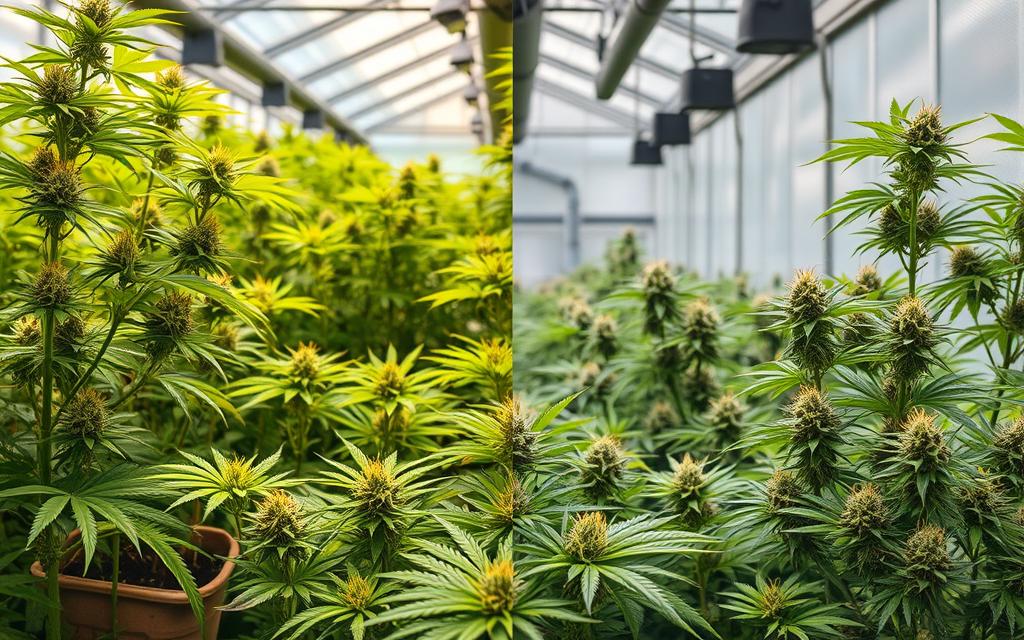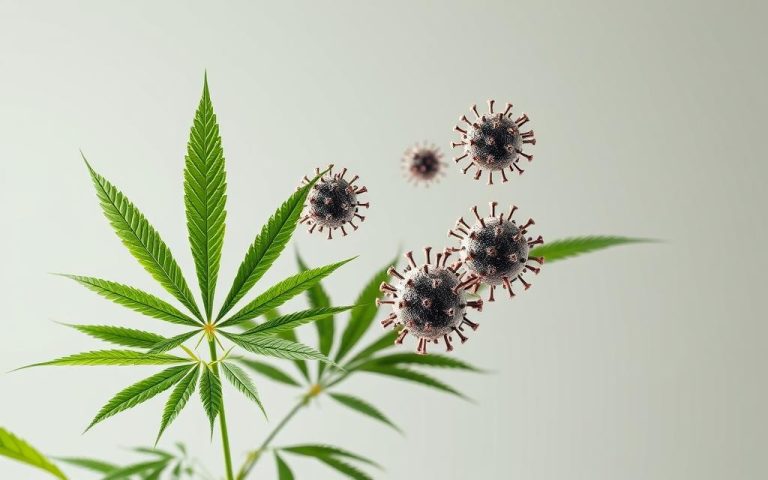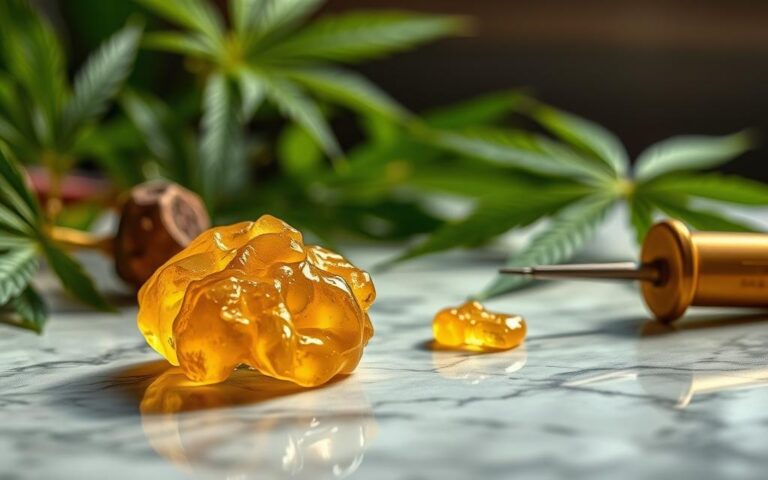Cannabis Cultivation Myths Debunked
The cannabis plant has a long history, going back thousands of years. But the criminalisation of cannabis has made research hard to do. This has led to many myths about how to grow cannabis, confusing many new growers. They often depend on stories instead of real science. As 2024 approaches, it’s essential to use true knowledge for the care of cannabis plants. This leads to better growth and quality. In this article, we’ll tackle these myths and set the record straight.
The Origins of Cannabis Cultivation Myths
The history of growing cannabis is full of myths. These often come from old traditions and stories told over time. Ancient cultures worshipped its effects and knew of its healing powers. As cannabis travelled the world, so did the stories about how to grow it and what it could do.
The impact of criminalisation on cannabis research
Making cannabis illegal has made it hard to study. This situation has stopped scientists from finding the best ways to grow it and proving the tips often shared among beginners. Most of these methods are still not proven and are just hearsay. The effect of criminalisation on research has slowed progress in understanding cannabis, keeping myths alive about its cultivation and benefits.
The reliance on word-of-mouth among novice farmers
New cannabis growers often listen to stories rather than scientific facts. This choice leads them to use unproven methods. This reliance on word-of-mouth keeps the origins of cannabis myths alive. Novice farmers trying to navigate through wrong information might use bad practices, reducing their crops’ quality and quantity. It’s important to fill this knowledge gap with science to improve cannabis farming.
Common Misconceptions About Cannabis Fertilisation
Proper fertilisation is key in growing cannabis. Yet, many growers fall for myths that can hurt their crops. It’s important to know the truths to avoid errors like nutrient burn or too much phosphorus.
Understanding nutrient burn and lockout
Nutrient burn is common and harms the leaves, turning them yellow or giving them burnt tips. It happens when plants get too many nutrients. Each strain may need different nutrient levels, so balance is important.
Nutrient lockout stops plants from getting vital nutrients, leading to growth issues and poor health. Managing nutrition correctly is essential to avoid this.
Phosphorus overload and its effects on cannabis quality
Phosphorus is vital for the flowering stage, helping with energy and blooms. Yet, too much can harm the plant. This may result in harsh smoke and lower quality buds.
Knowing the right fertilisation amount ensures good yields and happy consumers. This is crucial for a successful cannabis cultivation.
Do Hanging Plants Upside Down Increase Potency?
Some growers believe that hanging cannabis plants upside down boosts THC levels. Yet, this idea isn’t widely backed by experts.
The truth behind artisanal drying practices
Artisanal drying aims to preserve terpenes and cannabinoids, not to increase THC. Hanging plants upside down ensures a slow drying. This method keeps aroma and flavour, avoiding mould and preserving cannabis quality.
How drying methods affect aroma and flavour
The drying technique impacts the cannabis’s taste and smell. Despite common practice, hanging them upside down doesn’t raise potency. Flavour is more influenced by genetics and post-harvest care. Knowing about drying is key for the best cannabis quality.
Cannabis and Light: Do Green Photons Matter?
The way light affects cannabis growth is widely debated. A common myth is that green light doesn’t help cannabis grow. But, diving into the light spectrum of cannabis uncovers more details. Recent studies found that green light actually plays a big role. It helps the plant grow denser and healthier by reaching deeper into its canopy.
Debunking the myth regarding green light in growth
People often thought cannabis only needed red and blue light for photosynthesis. They believed green light wasn’t useful, missing out on the advantages of full-spectrum light. Research now shows cannabis can use green light in helpful ways. For instance, controlling light leaks during flowering prevents unwanted hermaphroditing, highlighting the need for precise light control.
The role of full-spectrum light in enhancing plant health
Using full-spectrum lights, like the FOHSE’s A3i Grow Light, massively boosts plant health and output. This grow light hits all necessary points of the cannabis light spectrum. Growers can change light levels from 30% to 100% to meet their plants’ needs. Keeping the Daily Light Integral (DLI) between 51 to 55 moles improves productivity and fights off pests.

Adding full-spectrum light in the flowering stage improves root health and plant strength. Supplemental LED systems are in high demand for keeping ideal DLI levels during crucial flowering times. Using smart lighting techniques and knowing how green light affects growth leads to better yields and plant quality.
For more insights into improving cannabis cultivation, consider exploring creative blog posts and trends within the industry at this resource.
Cannabis Cultivation Myths Surrounding Terpenes and Flavours
Understanding how genetics, microbes, and terpene profiles interlink is key for growers wishing to improve flavour. The myths around cannabis terpenes can confuse growers about what really affects these compounds. It’s found that genetics play a big role in a cultivar’s flavour, indicating this should be the main focus.
The influence of genetics on taste
Genetics are a major factor in the taste of cannabis, with each strain having its own unique flavour. Over 150 different terpenes can be found in cannabis, contributing to a range of tastes and aromas. By selecting the right genetics, growers can bring out these desirable flavours effectively.
Microbes vs. compost – what’s truly beneficial for terpenes?
Microbes help enhance soil health, benefiting the plant’s growth and its terpene profile. Even though some think certain composts like fruit peels can increase terpene levels, it’s the microbial environment that truly makes a difference. Knowing how microbes affect terpenes can improve how one grows cannabis.
| Factor | Influence on Terpene Production |
|---|---|
| Genetics | Defines the terpene profile and overall flavour characteristics of the strain |
| Microbial Health | Enhances soil quality, promoting healthier plants which may produce more terpenes |
| Compost Additives | Minimal impact; often based more on anecdotal evidence than scientific backing |
Gender Identification in Cannabis Plants
Knowing the gender of cannabis plants is vital in their cultivation. Many believe they can guess the sex of seeds just by looking. This is not true. It is hard to tell if seeds are male or female until they show specific signs during flowering.
The impossibility of distinguishing male from female seeds
Even with feminized seeds, there’s still a small chance a male plant will appear. Signs of whether a plant is male or female typically show around four to six weeks after the seeds sprout. But, just looking at the plants can be misleading.
Understanding genetic testing for better cultivation
Genetic testing is a more accurate way to find out a plant’s gender. Learning about DNA testing in a Cannabis Tissue Culture Master Class can help. With methods like PCR, growers can easily tell the gender of their cannabis seeds. This helps ensure more female plants, which are usually desired.
There are other methods like hormone testing, but they can be expensive. It’s best to check the gender when plants are a few weeks old, during the day. Techniques like tissue culture help clone female plants, leading to better results.
| Method | Accuracy | Cost | Time Required |
|---|---|---|---|
| Visual Inspection | Medium | Low | 4-6 weeks |
| Dna Testing | High | Medium | 1 week |
| Hormone Testing | High | High | 2 weeks |
It’s great to learn more about growing cannabis. Workshops by experts offer limited seats. They cover important topics like how to deal with plant diseases and make synthetic seeds.
Environmental Factors in Cannabis Cultivation
Choosing between indoor and outdoor cannabis growing is crucial for cultivators. Each method has unique environmental factors that affect the plant’s growth, yield, and the quality of the final product. The choice depends on personal preference, local conditions, and what resources are available.
Comparing indoor vs outdoor growing conditions
Indoor cannabis cultivation gives growers precise control over light, temperature, and humidity. This can lead to quicker growth cycles and fewer pests. However, it uses more resources like energy and water. For example, cannabis plants typically need about 22.7 litres (6 gallons) of water per day in the growing season.
On the other hand, outdoor growing uses natural sunlight. This can help develop strong flowers and high levels of terpenes. But, it also comes with risks like changing weather and pests.
The significance of regional terroirs
Just like in the wine industry, understanding regional terroirs is key for cannabis flavour and aroma. Factors such as soil type, weather, and altitude influence the final product. In California, for instance, cultivators use diverse water sources like well water (58.2%) and surface water (21.6%). These aspects, along with local plants and animals, can change the cannabis’s chemical profile.
Cultivators looking for premium quality need to consider how their region affects the cannabis plants.
| Growing Method | Advantages | Challenges |
|---|---|---|
| Indoor |
|
|
| Outdoor |
|
|
In summary, understanding the environmental impacts on cannabis cultivation is critical. It helps growers choose the best methods and strategies. This choice affects both the quality and sustainability of their products.
Conclusion
Exploring the truth about cannabis myths is key for better growing knowledge. With the right farming methods, growers can improve their crops and product quality. It’s important to keep talking about these myths, especially as new research gives us more facts.
The changing laws mean we must rely on solid data, not just stories. This approach helps growers improve and supports a healthier community. Understanding the research on cannabis helps us see the real risks and benefits of growing and using it.
Moving forward, we need a community that values learning and research in cannabis growing. By focusing on true information, we can adopt safe practices. This will lead to wider acceptance of cannabis in farming.










